Have you ever wondered how LED technology has become such a game-changer in the lighting industry? What makes them stand out from traditional light sources? Are you curious to learn more about the ins and outs of LEDs? If so, you’re in the right place!
Light-Emitting Diodes, or LEDs, are semiconductor devices that emit light when an electric current passes through them. They are energy-efficient, long-lasting, and environmentally friendly, making them the top choice for various applications across industries. But there’s so much more to discover about LEDs, and this ultimate guide will take you on a journey through their fascinating history, benefits, and future developments.
What Are Light Emitting Diodes (LEDs)?
Light Emitting Diodes (LEDs) are semiconductor devices that convert electrical energy into light. They are a type of solid-state lighting technology, meaning they do not use a filament or gas like traditional incandescent or fluorescent lights. Instead, they rely on the movement of electrons within the semiconductor material to generate photons, which are particles of light.
In summary, Light Emitting Diodes (LEDs) offer numerous benefits compared to traditional lighting technologies, including energy efficiency, longevity, and durability.
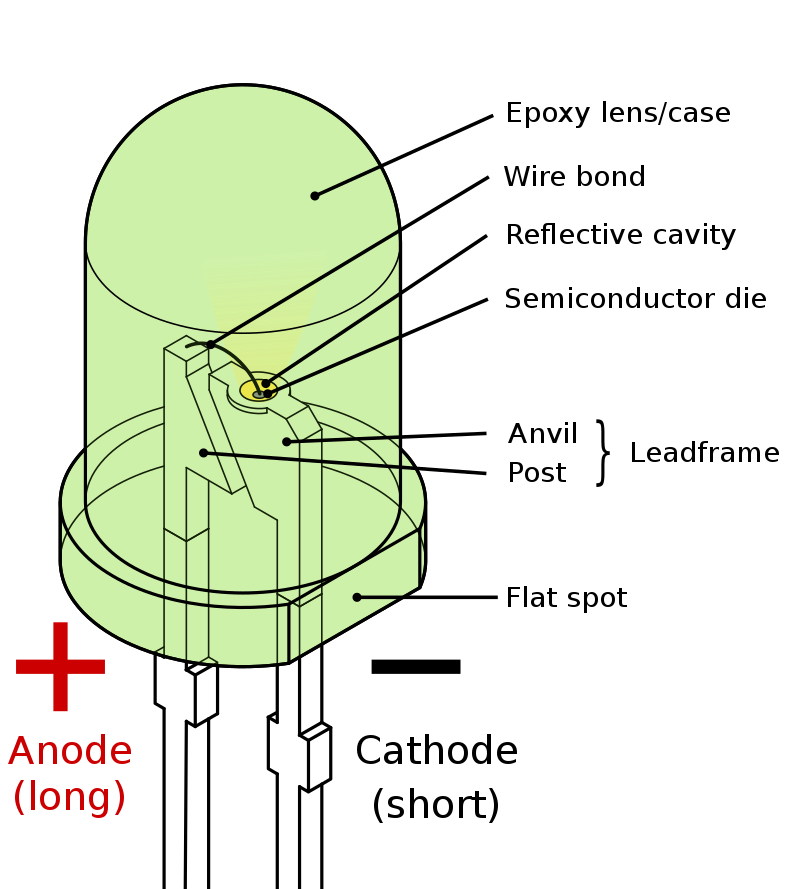
What’s The Brief History of LEDs?
LED technology can be traced back to the early 20th century when British inventor H.J. Round discovered electroluminescence. However, it wasn’t until the 1960s that the first practical LED was developed by Nick Holonyak Jr. Since then, LED technology has advanced significantly, with LEDs becoming more efficient, brighter, and available in a wider range of colors.
Here’s a brief overview of the history of LEDs :
- 1907: British inventor Henry Joseph Round observed electroluminescence, a phenomenon where materials emit light when exposed to an electric current.
- 1927: Russian scientist Oleg Losev published a paper on light emission in semiconductor crystals.
- The 1950s: Researchers at Bell Laboratories developed the first infrared LED, which emitted light beyond the visible spectrum.
- 1962: Nick Holonyak Jr., a scientist at General Electric, invented the first visible red LED. This breakthrough paved the way for LEDs to be used in indicators and displays.
- The 1970s: George Craford, a former student of Holonyak, developed a more efficient and brighter yellow LED, followed by the development of green LEDs. Around the same time, blue LEDs were also invented, but they were not as efficient.
- The 1990s: Shuji Nakamura, working at Nichia Corporation, developed a high-brightness blue LED, making it more practical for various applications. This invention led to the creation of white LEDs by combining blue LEDs with phosphor coatings.
- The 2000s: Rapid advancements in LED technology increased efficiency, brightness, and color options, leading to widespread adoption in various applications such as general lighting, automotive, and displays.
Today, LEDs continue to evolve, with new materials and manufacturing techniques paving the way for even more energy-efficient, versatile, and high-performing lighting solutions.
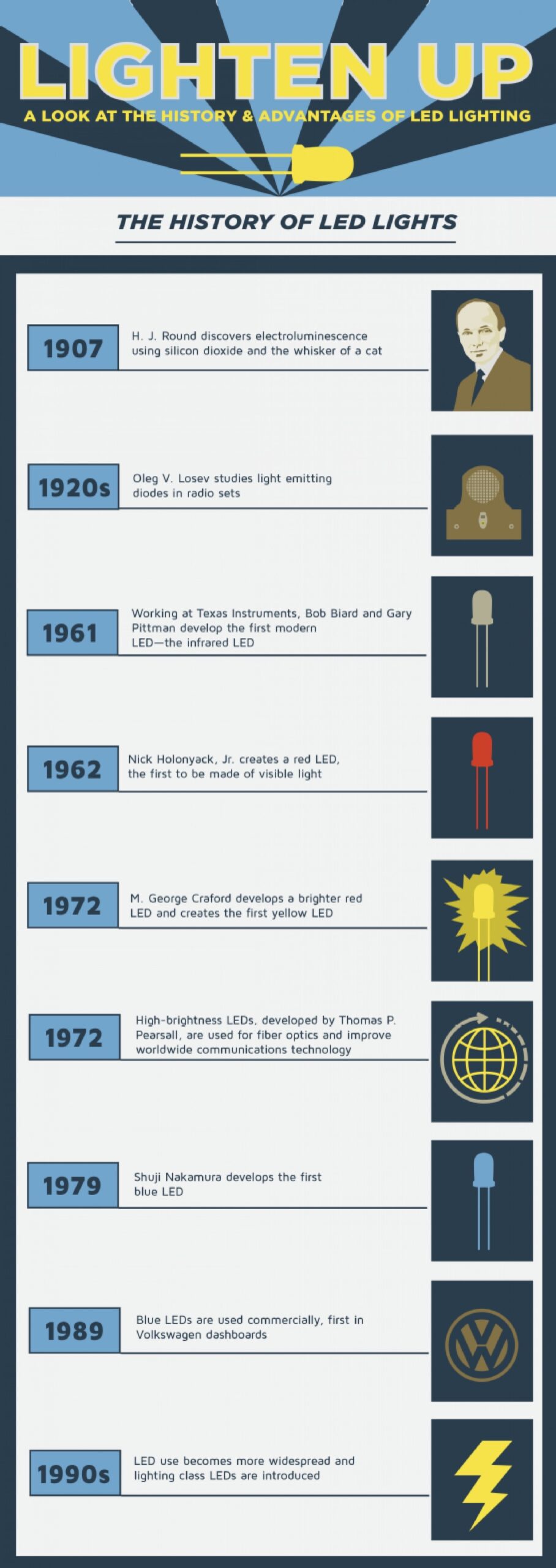
What Are The Advantages of LED Lighting?
The advantages of LED lighting include energy efficiency, cost savings, environmental benefits, durability, design versatility, extensive color options, dimmability, instant-on performance, and improved light quality. Let us take you through a detailed explanation of all the advantages of LED lighting step by step:
- Energy Efficiency and Cost Savings
LEDs are incredibly energy-efficient, using up to 90% less energy than incandescent bulbs and 50% less than fluorescent bulbs. This translates to significant cost savings on your energy bills, especially when replacing multiple traditional bulbs with LEDs.
- Environmental Benefits
LEDs have a much smaller environmental footprint than traditional bulbs. They contain no hazardous materials like mercury and produce less heat, reducing the demand for air conditioning. Additionally, their long lifespan means less waste and fewer resources needed for production and disposal.
- Durability and Longevity
LEDs are made of solid-state components, making them more resistant to shocks, vibrations, and temperature fluctuations. This durability makes them ideal for various environments, including outdoor and industrial settings. LEDs are built to last, with lifespans ranging from 25,000 to 50,000 hours or more. This is significantly longer than traditional incandescent (1,000 hours) and fluorescent bulbs (10,000 hours). Longer lifespans mean less frequent replacements and reduced maintenance costs. Source
- Design Versatility
LEDs offer unparalleled design versatility. They can be used in a wide range of shapes, sizes, and styles, allowing for unique and creative lighting solutions. This flexibility makes them perfect for a variety of applications, from residential to commercial and industrial settings.
- Extensive Light Color Options & Dimmability
LEDs are available in a wide range of colors, from warm white to cool white and everything in between. They can also be easily controlled and dimmed, allowing for customizable lighting solutions that cater to individual preferences and needs. Many LED lights are compatible with dimmer switches, allowing users to control the light intensity and create the desired ambiance.
- Instant On
Unlike some traditional bulbs that require a warm-up period, LEDs turn on instantly, providing immediate full brightness. This feature is particularly beneficial in situations where quick lighting response is required, such as security lighting or traffic signals.
- Improved Light Quality
LEDs offer better color rendering and more uniform light distribution compared to traditional lighting technologies, leading to enhanced visual comfort and improved aesthetics.
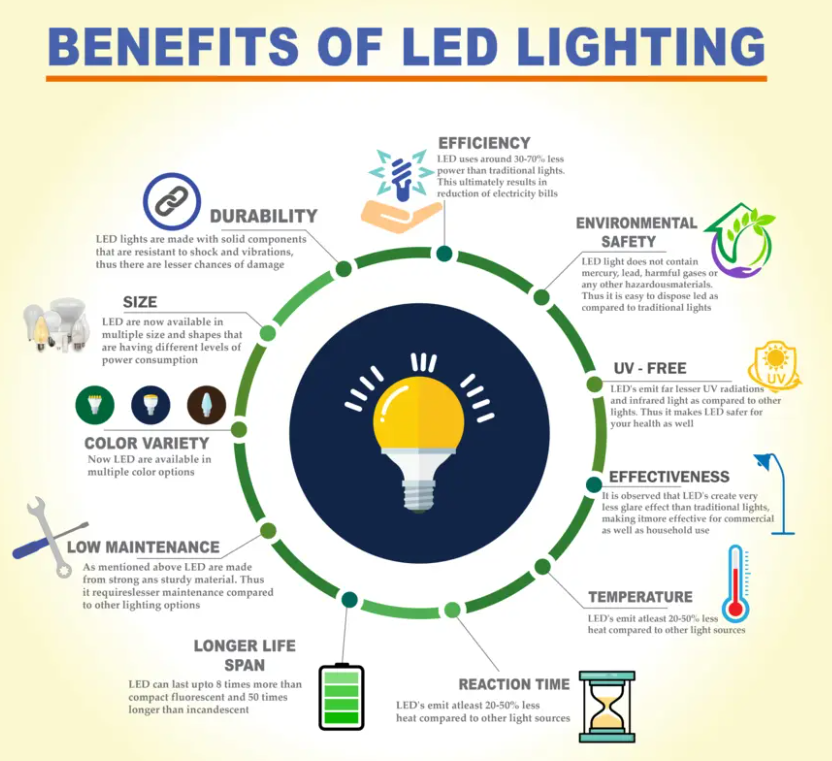
How Do LEDs Work?
LEDs (Light Emitting Diodes) work through a process called electroluminescence, in which light is emitted when an electric current passes through a semiconductor material. The color of the light depends on the materials used in the semiconductor, and the brightness is determined by the amount of current applied.
Here’s a step-by-step explanation of how LEDs work:
- Semiconductor material: LEDs are made of semiconductor materials, such as gallium arsenide (GaAs), gallium nitride (GaN), or indium gallium nitride (InGaN). These materials have properties between conductors and insulators, allowing them to control the flow of electrical current.
- P-N junction: The core of an LED consists of a P-N junction formed by combining a positively charged (P-type) and a negatively charged (N-type) semiconductor material. The P-type material has an excess of positive charge carriers (holes), while the N-type material has an excess of negative charge carriers (electrons).
- Forward bias: When a voltage is applied across the LED in the forward direction (positive to the P-side and negative to the N-side), the electrons in the N-type material move towards the P-N junction, and the holes in the P-type material move in the opposite direction.
- Recombination: At the P-N junction, the electrons and holes recombine. This recombination process involves the release of energy in the form of photons, which are particles of light.
- Photon emission: The energy of the emitted photons determines the color of the light. The semiconductor material’s composition and structure influence the energy levels of the electrons and holes, thus controlling the emitted light’s color. For example, different materials produce different colors, such as red (GaAs), blue (GaN), or green (InGaN).
- Lens and housing: The emitted light is then directed and shaped by a lens or a reflector, which is integrated into the LED’s housing. This allows the light to be distributed in a specific pattern or direction, depending on the application.
In summary, LEDs work by passing an electric current through a semiconductor material, causing electrons and holes to recombine at the P-N junction and emit light in the form of photons. The color of the light is determined by the semiconductor material and the energy levels involved in the recombination process.
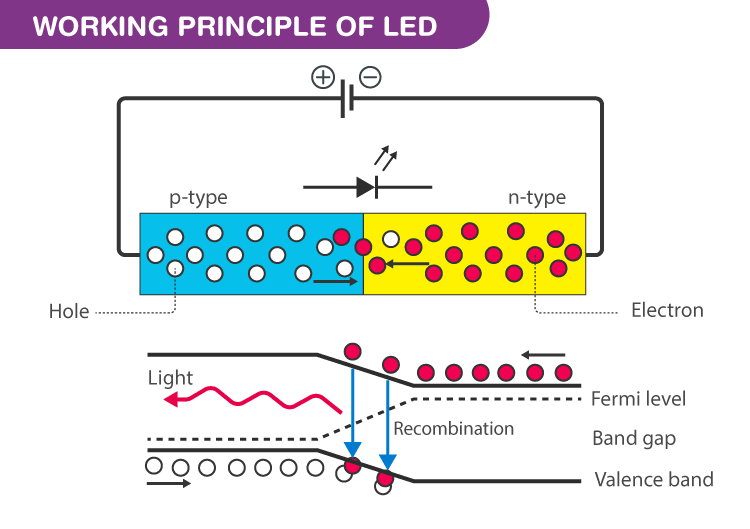
What are the different types of LEDs and their applications?
There are various types of LEDs, each with its unique characteristics and applications. Some of the main types include standard LEDs for general lighting, high-power LEDs for intense light output, OLEDs and PLEDs for display technology, QD-LEDs for high-quality displays and lighting, and UV-LEDs for disinfection and medical devices.
Now let’s delve into the details of each type:
- Standard LEDs: These are the most widely used LEDs, made from materials like gallium arsenide, gallium phosphide, or a combination of the two. Standard LEDs are ideal for low-power applications, including:
- Indicator lights for appliances and electronic devices
- Flashlights and torches
- Decorative lightings, such as Christmas lights or light strips
- Traffic signals and signage
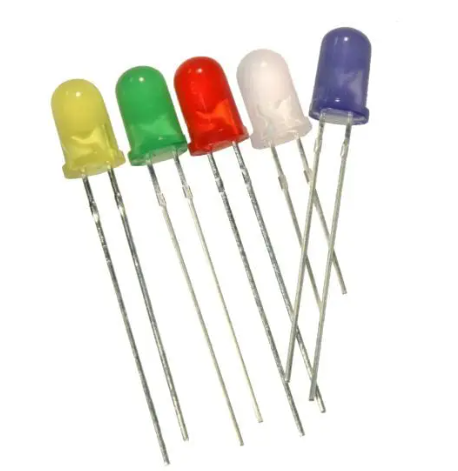
- High-power LEDs: As the name suggests, these LEDs are designed for applications requiring intense light output. They have a higher current rating and generate more heat than standard LEDs, necessitating better heat management. High-power LEDs are used in:
- Floodlights for stadiums, construction sites, and outdoor events
- Streetlights and parking lot lighting
- Automobile headlights and taillights
- Industrial and commercial lighting
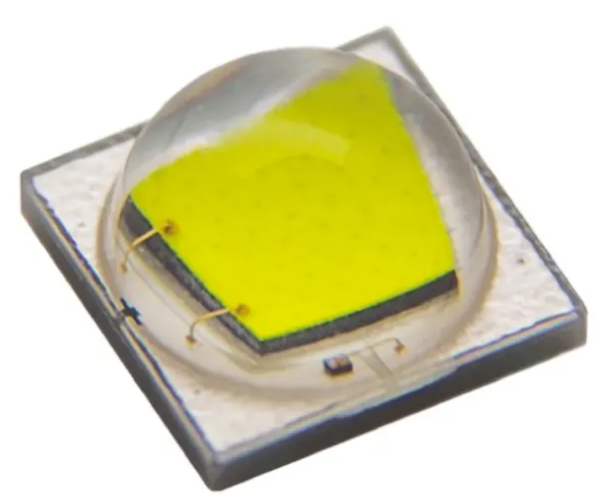
- Organic LEDs (OLEDs): OLEDs use organic materials, like carbon-based compounds, in the emissive layer of the semiconductor. They emit light when a current is applied. OLEDs have several advantages over traditional LEDs, such as better color rendering and thinner, lighter designs. OLEDs are commonly used in:
- Televisions and computer monitors
- Smartphone and tablet displays
- Smartwatches and other wearable devices
- Advertising displays and digital signage
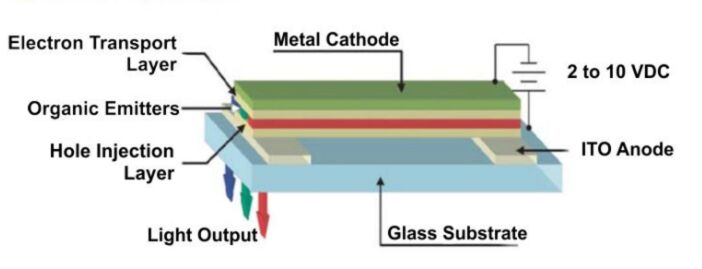
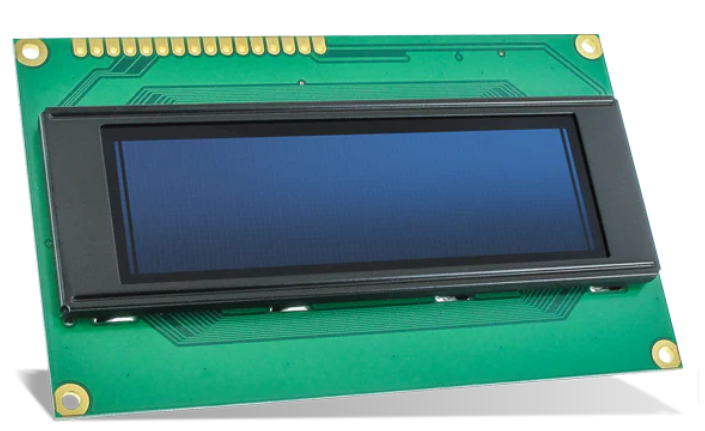
- Polymer LEDs (PLEDs): PLEDs use conductive polymers in the semiconductor, making them more flexible than other LED types. This flexibility allows for innovative applications, including:
- Flexible displays for smartphones, tablets, and televisions
- Curved and bendable lighting fixtures
- Electronic paper and e-reader displays
- Wearable technology, such as clothing and accessories
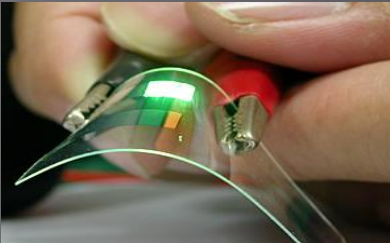
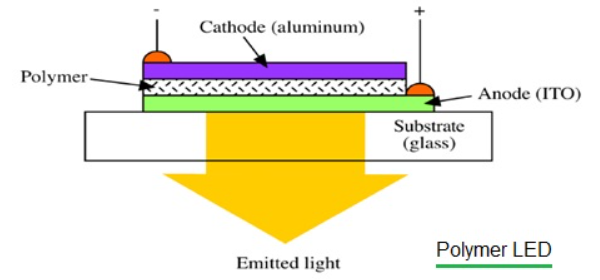
- Quantum Dot LEDs (QD-LEDs): QD-LEDs use quantum dots—nanoscale semiconductor particles—to emit light. These LEDs offer improved color quality, energy efficiency, and a longer lifespan than other LED types. QD-LEDs are suitable for:
- High-end televisions and computer monitors
- Professional-grade photography and videography equipment
- Specialty lighting applications requiring precise color rendering
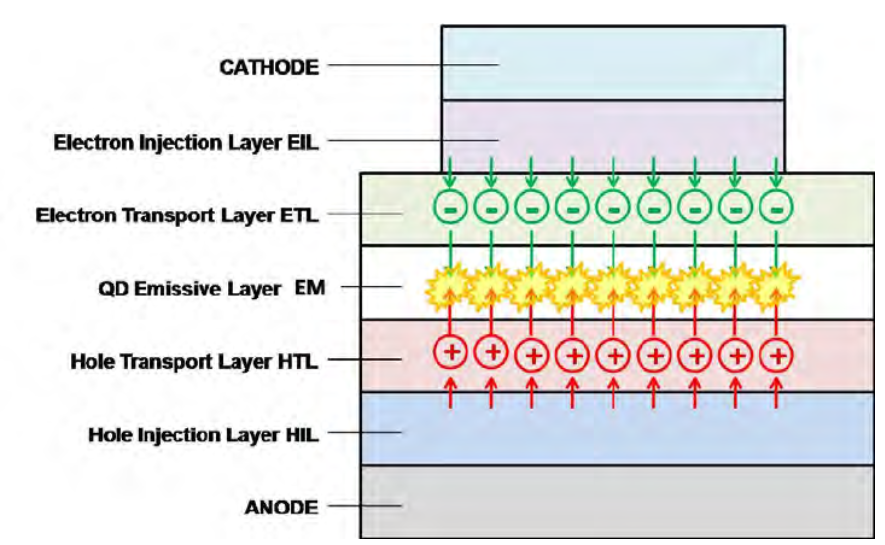
- Ultraviolet LEDs (UV-LEDs): Unlike other LEDs that emit visible light, UV-LEDs emit ultraviolet light. They have unique applications, such as:
- Disinfection and sterilization in healthcare facilities, laboratories, and food processing plants
- Water purification systems for drinking water and aquariums
- Medical devices for phototherapy and dental curing
- Counterfeit detection and forensic analysis
UV-LEDs (Ultraviolet Light Emitting Diodes) emit ultraviolet light and can be categorized into three main groups according to their wavelength range:
- UVA (UV-A, or long-wave) LEDs: These have a wavelength range of 320-400 nm. They are commonly used in applications such as the curing of adhesives, inks, and coatings, as well as for disinfection and counterfeit detection.
- UVB (UV-B, or medium-wave) LEDs: These have a wavelength range of 280-320 nm. Their primary applications include medical phototherapies, such as treating skin conditions like psoriasis and eczema, and in some disinfection processes.
- UVC (UV-C, or short-wave) LEDs: These have a wavelength range of 200-280 nm. They are known for their germicidal properties and are widely used for disinfection, sterilization, and water purification purposes.
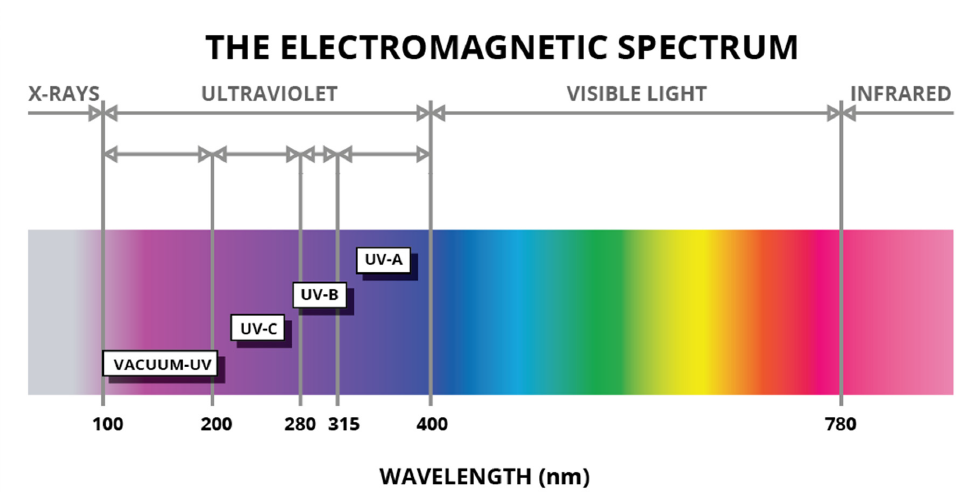
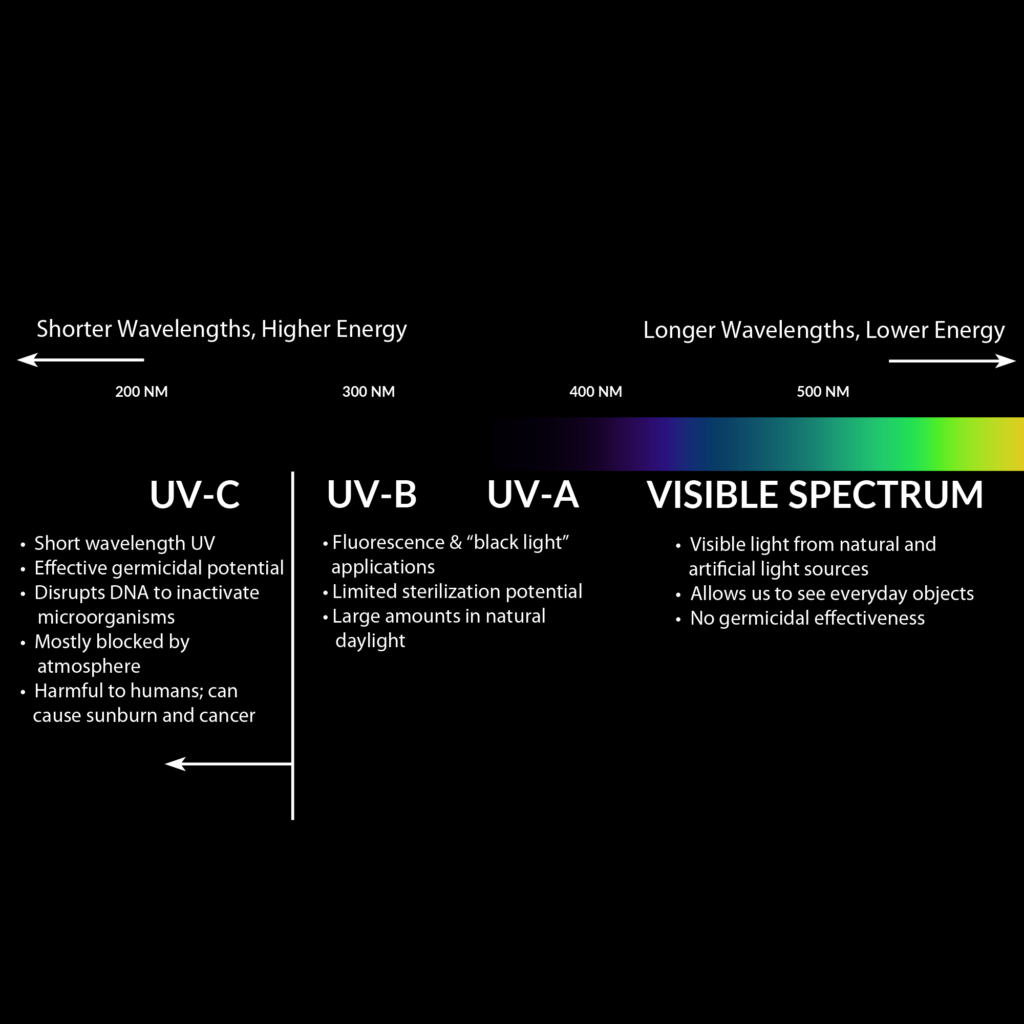
How are LEDs made?
LED production involves growing a thin layer of semiconductor material on a substrate, forming a p-n junction, and processing the wafer into individual die, which are then assembled, encapsulated, and tested to create the final product.
Here is an overview of the steps involved in making LEDs:
- Substrate preparation:
The process begins with a clean substrate, which is often made of materials such as sapphire, silicon carbide, or gallium arsenide. The choice of substrate material depends on the type of LED being made and its desired properties.
- Epitaxial growth:
The next step is to grow a thin layer of semiconductor material on the substrate. This is typically done using a process called epitaxy, where the semiconductor material is deposited onto the substrate in a controlled environment. The most common techniques for epitaxial growth are Metal-Organic Chemical Vapor Deposition (MOCVD) and Molecular Beam Epitaxy (MBE).
- Doping:
During the epitaxial growth, the semiconductor material is “doped” with impurities to create either an n-type or p-type region. N-type regions have an excess of electrons, while p-type regions have a lack of electrons (also known as “holes”). This creates a p-n junction, which is the foundation of an LED.
- Wafer processing:
After the epitaxial growth is complete, the semiconductor wafer undergoes a series of processing steps to form the LED structure. This may include etching, deposition of additional layers, and patterning of the layers to create contact pads for electrical connections.
- Die cutting and separation:
Once the wafer processing is complete, the LED wafer is cut into individual die, also known as “chips.” This can be done using methods like scribing and breaking, or laser dicing.
- Die bonding and wire bonding:
The individual LED die is then attached to a carrier, such as a lead frame or ceramic substrate, using a process called die bonding. The electrical connections between the LED die and the carrier are made using thin wires in a process called wire bonding.
- Encapsulation:
To protect the LED die and the wire bonds, the assembly is encapsulated with a clear or diffused material, typically epoxy or silicone. This also helps shape and direct the emitted light.
- Testing and binning:
The finished LEDs are tested for their electrical, optical, and thermal performance. LEDs with similar performance characteristics are grouped together, a process called “binning.” This ensures that LEDs used in the same application have consistent color, brightness, and efficiency.
- Packaging:
Finally, the LEDs are packaged for sale or further assembly into LED-based products like light bulbs, displays, or other lighting fixtures.
Throughout this process, quality control measures are in place to ensure that the finished LEDs meet the required specifications and performance standards.
What factors and specs impact LED performance?
LED performance is influenced by a range of specifications and factors that impact its ability to produce light effectively.
Some important specifications include color temperature, color rendering index (CRI), luminous flux, luminous efficacy, forward voltage (VF), and reverse current leakage. Additionally, several factors contribute to LED performance, such as thermal management, LED driver, aging and degradation, optics, color shift, ingress protection (IP) rating, dimming capability, and environmental factors.
Specifications:
- Color Temperature(K):
The color temperature of an LED refers to the perceived color of the light it emits and is measured in Kelvin (K). The higher the Kelvin value, the cooler the light appears (bluish-white), while lower Kelvin values indicate warmer light (yellowish-white). The color temperature of an LED affects its perceived brightness, and it’s important to select the appropriate color temperature for the intended application.
- Color Rendering Index (CRI):
The CRI is a measure of how accurately an LED light source renders colors compared to natural light. It is expressed as a number between 0 and 100, with higher values indicating better color accuracy. A high CRI is important for applications where color accuracy is critical, such as in photography or art galleries.
- Luminous Flux(lm):
Luminous flux refers to the total amount of visible light emitted by an LED light source and is measured in lumens (lm). The luminous flux of an LED determines its overall brightness.
- Luminous Efficacy(lm/W):
Luminous efficacy is the ratio of luminous flux to electrical power input and is measured in lumens per watt (lm/W). A higher luminous efficacy indicates greater energy efficiency and more efficient use of power.
- Forward Voltage (VF):
Forward voltage refers to the voltage required to produce light from an LED light source. It is important to select an appropriate voltage to ensure the LED operates at its optimal performance level.
- Reverse Current Leakage(A):
Reverse current leakage is the amount of current that flows in the opposite direction of the intended flow, which can reduce LED efficiency and lifespan. High-quality LED drivers can minimize reverse current leakage and prevent damage to the LED.
Factors:
- Thermal Management: Proper thermal management is essential to maintain optimal LED performance and prevent damage from excessive heat. LEDs generate heat during operation, and if not managed correctly, can cause a decrease in performance and a shorter lifespan. Good thermal management involves selecting an appropriate heatsink, ensuring adequate airflow, and monitoring operating temperatures.
- Heatsink Selection: An appropriate heatsink is needed to dissipate the heat generated by the LED. The size and material of the heatsink should be chosen based on the size of the LED and the operating conditions. The heatsink should have enough surface area and thermal conductivity to effectively transfer heat away from the LED. Aluminum is a common material for heatsinks due to its high thermal conductivity and low cost.
- Airflow: Adequate airflow is important to help dissipate heat from the LED and the heatsink. Airflow can be achieved through natural convection, forced convection (using a fan), or a combination of both. It is important to ensure that there is enough space around the LED and heatsink to allow air to flow freely.
- Temperature Monitoring: It is important to monitor the operating temperature of the LED to ensure it is within safe limits. High temperatures can damage the LED and reduce its lifespan. Temperature sensors can be used to monitor the temperature and alert the user if it exceeds a certain threshold. By taking these steps, LED performance can be maintained at optimal levels, and the LED’s lifespan can be extended.
- LED Driver: LED drivers are essential for the proper operation and longevity of LED sources. They regulate the current and voltage supplied to the LED, ensuring efficient and reliable performance. LED drivers come in different types, such as constant-current, constant-voltage, and dimmable drivers, and are used for different applications. High-quality LED drivers can improve efficiency, and lifespan, and prevent issues like overloading, flickering, and color shifting.
- Aging and Degradation: Over time, LED performance can decrease due to aging and degradation. This can be caused by several factors, including heat, humidity, and operating conditions. One of the main factors is heat. LEDs generate heat when they are in operation, and if this heat is not properly dissipated, it can cause damage to the LED and reduce its lifespan. Proper thermal management, such as using heat sinks or fans to dissipate heat, can help mitigate the effects of heat on LED performance. Humidity is another factor that can contribute to LED aging and degradation. Exposure to high humidity can cause corrosion of the LED’s internal components, which can lead to failure or reduced performance over time. Using moisture-resistant materials and sealing the LED properly can help protect against humidity damage. Finally, the operating conditions of the LED can also contribute to aging and degradation. For example, overdriving the LED with too much current or voltage can cause it to degrade more quickly. Using high-quality components and controlling the operating conditions of the LED can help reduce the effects of aging and degradation. In summary, proper thermal management, selecting high-quality components, and controlling operating conditions can help mitigate the effects of aging and degradation on LED performance.
- Optics: Optics play a critical role in shaping the output of LED lighting systems. Lenses and reflectors are commonly used to control the direction and intensity of the light emitted by LEDs, helping to optimize the light output for specific applications. For example, lenses can be used to focus the light emitted by an LED into a more narrow beam angle, improving the efficiency of the system by reducing wasted light that is emitted in unwanted directions. Similarly, reflectors can be used to redirect light that would otherwise be emitted in undesirable directions, increasing the overall efficiency of the system by ensuring that a larger proportion of the light is directed toward the desired target. Other types of optics, such as diffusers or prismatic films, can be used to control the distribution of light emitted by an LED, creating a more uniform and pleasing visual appearance. Additionally, anti-glare optics can be used to reduce the amount of light that is reflected off of glossy surfaces, reducing eye strain and improving visual comfort. When selecting optics for an LED lighting system, it’s important to consider the specific requirements of the application, as well as the performance characteristics of the LED itself. Factors such as beam angle, color temperature, and color rendering index (CRI) should all be taken into account to ensure that the optimal optical configuration is selected.
- Color Shift: Color shift refers to changes in the color of the LED light over time. This can be caused by aging, temperature, and operating conditions. High-quality LEDs with good thermal management and stable phosphor coatings can minimize color shift. Additionally, it’s worth noting that color shifts in LED lighting can also be influenced by the quality and composition of the materials used in the LED manufacturing process. For example, variations in the quality of the semiconductor materials or the phosphor coatings can result in inconsistent or unstable color output over time. Color shift is typically measured using a metric known as MacAdam ellipses, which quantifies the degree of color difference between two light sources. One MacAdam ellipse represents the smallest perceptible color difference that the human eye can detect under standardized viewing conditions. For high-quality LED lighting applications, a color shift of no more than 3-4 MacAdam ellipses over the lifetime of the LED is generally considered acceptable.
- Ingress Protection (IP) Rating: The IP rating indicates the level of protection against dust and water ingress. The IP rating system is an internationally recognized standard used to classify and rate the degree of protection provided by an enclosure or housing for electronic devices against the intrusion of dust, dirt, moisture, and water. The IP rating consists of two digits, the first digit refers to the level of protection against solid particles such as dust, and the second digit refers to the level of protection against liquids such as water. The higher the number for each digit, the greater the degree of protection.
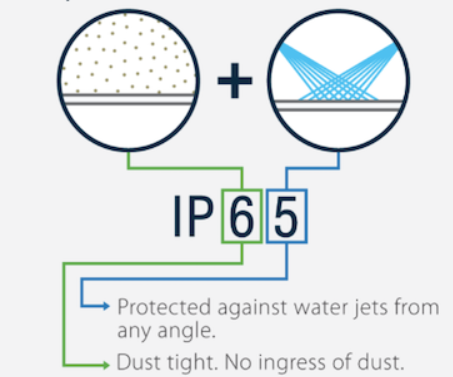
Source: Flexfire LEDsFor example, an IP65-rated LED light fixture would be protected against dust and water ingress to a high degree. The “6” in the first digit indicates that the fixture is completely protected against dust, while the “5” in the second digit indicates that it is protected against low-pressure water jets from any direction.
It’s important to select an appropriate IP rating for the intended application of the LED fixture to ensure that it can withstand the environmental factors that it may be exposed to. A higher IP rating may be necessary for outdoor applications or environments with high levels of dust or moisture.
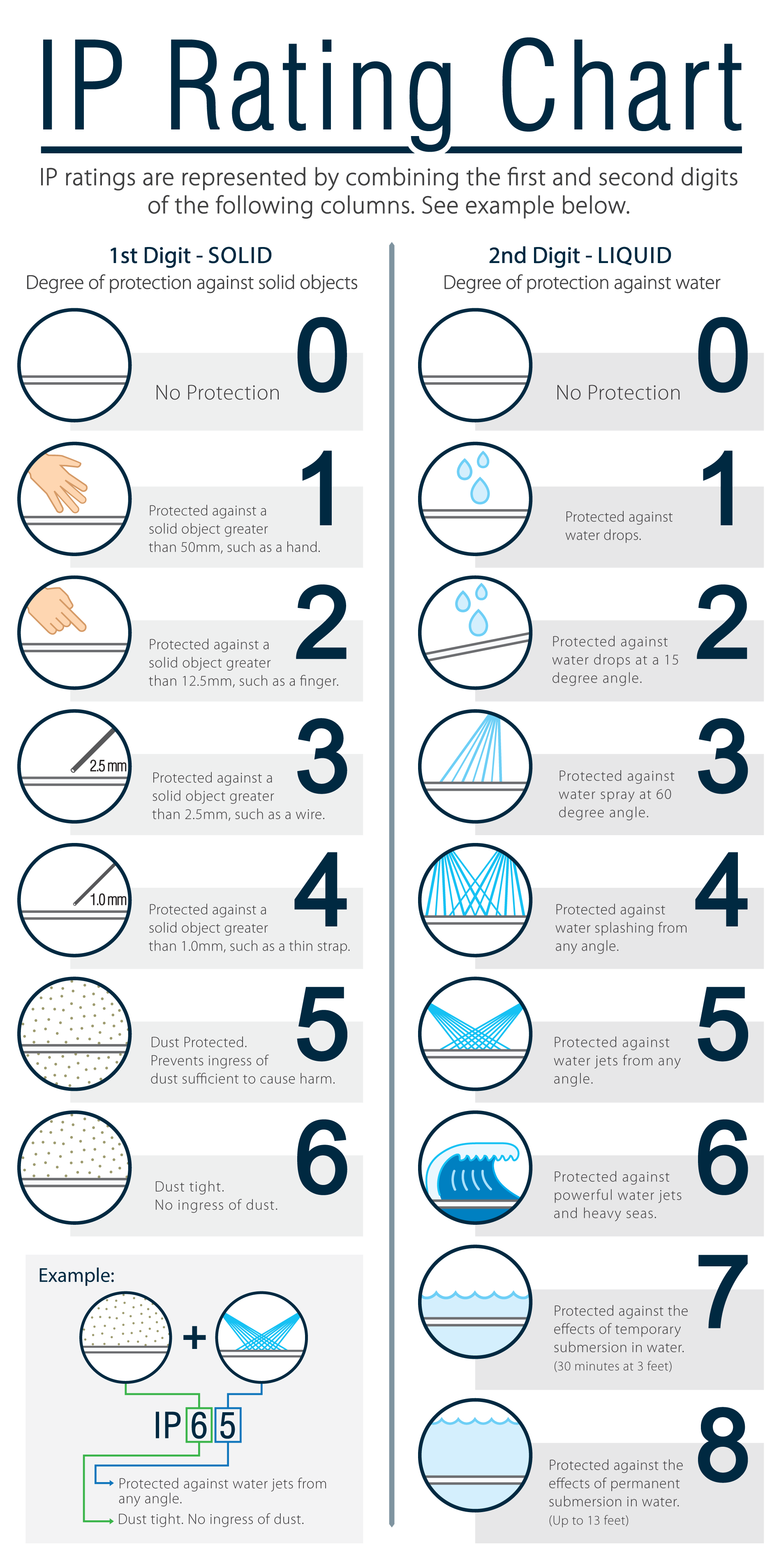
- Dimming Capability: Dimming capability allows for adjusting the LED light’s brightness as needed. LEDs can be dimmed through pulse-width modulation (PWM) or current reduction.
- Pulse-Width Modulation (PWM):
- PWM is a technique that controls the duty cycle of the LED by rapidly switching it on and off at a high frequency. By adjusting the ratio of on-time to off-time (duty cycle), the perceived brightness of the LED can be changed. Since the LED is either fully on or fully off during each cycle, there is minimal risk of color shift. PWM dimming is suitable for a wide range of applications, including residential, commercial, and industrial lighting. However, it can cause flickering if the frequency is not high enough, which may be an issue in sensitive environments or for individuals who are sensitive to flicker.
- Current Reduction:
- Current reduction, also known as analog dimming, involves adjusting the current flowing through the LED to control its brightness. By reducing the current, the LED emits less light. This method is simpler and more energy-efficient than PWM but may lead to color shifts as the LED’s color temperature changes with the current. Additionally, achieving precise control over a wide range of brightness levels can be more difficult with current reduction compared to PWM. Proper dimming control is important to maintain optimal LED performance and prevent flicker or color shift. It is essential to choose the appropriate dimming method and compatible dimming control systems for a particular application, considering factors such as required brightness range, sensitivity to flicker, and color accuracy.
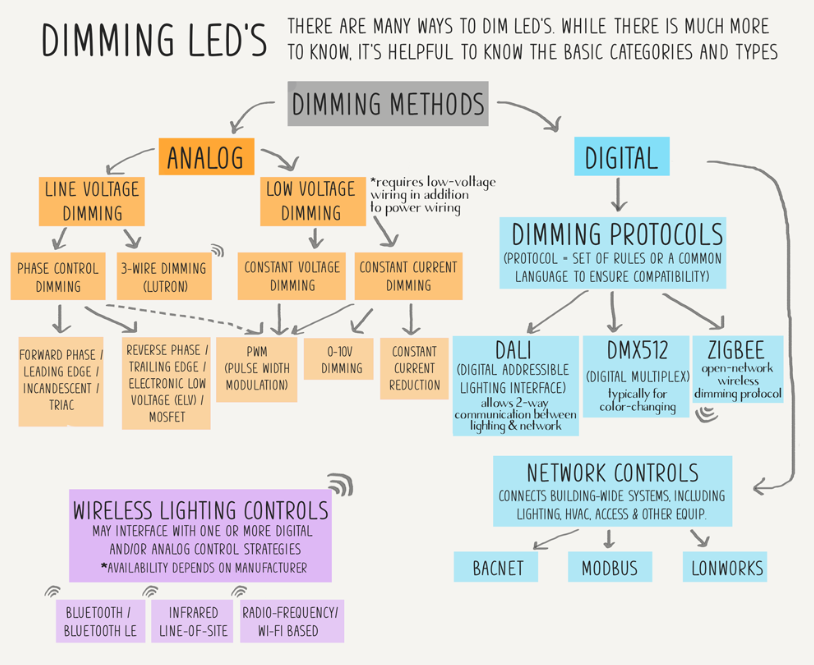
Source: Renfro Design Group- Environmental Factors:
Environmental factors, such as humidity, temperature, vibration, UV Exposure, Dust and Particulatescan, and Chemical Exposure could impact LED performance.
- Humidity:
- High levels of humidity can lead to condensation on the LED package and other electronic components. This can cause corrosion, which in turn can lead to a reduction in light output and a shorter lifespan for the LED. To minimize the effects of humidity, it is essential to choose LEDs with a suitable IP (Ingress Protection) rating and use appropriate sealing materials to protect the electronic components from moisture.
- Temperature:
- Temperature plays a critical role in LED performance. Higher temperatures can cause LEDs to lose efficiency, produce less light, and have a shorter lifespan. It is crucial to select an LED with a suitable temperature rating for the intended application and to provide proper thermal management, such as using heat sinks and appropriate heat dissipation techniques, to maintain the optimal operating temperature.
- Vibration:
- Vibrations can cause mechanical stress on the LED components, leading to damage, reduced light output, or a shortened lifespan. In applications where vibrations are expected, it is important to choose LEDs specifically designed to withstand such conditions. Additionally, using proper mounting techniques and materials can help reduce the impact of vibrations on the LED.
- UV Exposure:
- Long-term exposure to ultraviolet (UV) radiation can degrade the materials used in the LED package, leading to a reduction in light output and a shortened lifespan. Selecting LEDs with UV-resistant materials and coatings can help minimize the impact of UV exposure.
- Dust and Particulates:
- Dust and particulate matter can accumulate on the LED’s surface, leading to a reduction in light output and potential heat dissipation issues. Regular cleaning and maintenance can help maintain optimal LED performance. In environments with high levels of dust or particulates, choosing LEDs with appropriate IP ratings and protective features is essential.
- Chemical Exposure:
- Exposure to certain chemicals can cause corrosion or degradation of the LED package and its components. It is crucial to understand the potential chemical exposure in the intended application and select LEDs with appropriate materials and protective coatings.
To ensure the best performance and longevity of LEDs, it is crucial to carefully consider the environmental factors that may impact their operation. Proper selection of LEDs, installation techniques, and maintenance practices can help minimize the effects of environmental factors and ensure optimal performance throughout the LED’s lifespan.
In conclusion, LED performance is impacted by a range of specifications and factors that must be considered when selecting an LED for a particular application.
Specifications such as color temperature, CRI, luminous flux, luminous efficacy, forward voltage, and reverse current leakage, along with factors such as thermal management, LED driver, aging and degradation, optics, color shift, ingress protection, dimming capability, and environmental factors, all play a critical role in determining the LED’s performance and efficiency.
By understanding these specifications and factors, designers and engineers can select the appropriate LED and optimize its performance for the intended application.
What Are the Main LED Testing and Certification Organizations and Standards?
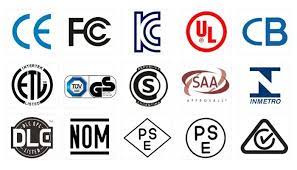
LED products are tested and certified by various organizations to ensure their performance, safety, and compliance with industry standards. Here are some main certifications, organizations, and standards related to the electrical & lighting industries:
- International Electrotechnical Commission (IEC):
- The IEC is an international organization that develops and publishes standards for electrical, electronic, and related technologies. They have various LED-related standards, such as IEC 62722-2-1 for LED luminaires performance and IEC 62031 for LED module safety specifications.
- Underwriters Laboratories (UL):
- UL is a global safety certification organization based in the United States. They provide various testing and certification services for LED products to ensure they meet safety requirements, such as UL 1598 for luminaires and UL 8750 for LED equipment.
- Conformité Européene (CE) Marking:
- The CE Mark is a certification mark that indicates a product complies with the European Union’s health, safety, and environmental protection legislation. LED products sold within the EU must bear the CE mark, which demonstrates compliance with applicable European directives and regulations.
- CSA Group (Canadian Standards Association):
- A Canadian organization that develops standards and provides testing, inspection, and certification services for various products.
- SAA:
- Standards Association of Australia – This certification signifies that a product has been tested and meets the safety and performance requirements of the relevant Australian and New Zealand standards.
- FC:
- FCC Mark (Federal Communications Commission) – This mark indicates that an electronic product complies with the required electromagnetic interference and radio frequency interference standards established by the Federal Communications Commission in the United States.
- KC:
- Korea Certification – This certification is required for certain products imported and sold in South Korea. It ensures that the products meet specific safety and quality requirements.
- CB:
- CB Scheme – This is an international certification program managed by the International Electrotechnical Commission for Electrical Equipment (IECEE). It facilitates the global acceptance of product safety test results among participating countries and reduces the need for duplicate testing.
- ETL:
- Electrical Testing Laboratories – ETL is a certification mark provided by Intertek, an independent testing organization. It indicates that a product has been tested and meets the safety and performance standards for North America.
- DLC:
- DesignLights Consortium – This certification is focused on energy-efficient commercial lighting products. Products that are DLC certified meet or exceed certain energy efficiency and performance requirements, making them eligible for rebates and incentives from utility companies.
- NOM:
- Norma Oficial Mexicana – This is the official Mexican standard for safety and quality. Products with the NOM mark have been tested and certified to meet the required safety and performance standards for sale in Mexico.
- PSE:
- Product Safety Electrical Appliance & Material – PSE is a mandatory safety certification in Japan for electrical appliances and materials, including lighting products. This certification ensures that products comply with the Japanese Electrical Appliance and Material Safety Law (DENAN Law) and meet specific safety and performance requirements before they can be sold in Japan.
- CCC Mark:
- China Compulsory Certification (CCC) is a mandatory safety certification system in China, covering a wide range of products, including lighting products. The CCC Mark ensures that a product complies with Chinese safety standards and regulations.
- GOST-R:
- This is a mandatory certification for products imported and sold in Russia. It signifies that the product complies with Russian safety and quality standards.
- EAC Certification
- EAC Certification is a mandatory requirement for products imported and sold within the Eurasian Economic Union (EAEU) countries, including Russia, Belarus, Kazakhstan, Armenia, and Kyrgyzstan. It ensures compliance with EAEU technical regulations and safety standards. The process involves product testing, documentation evaluation, and sometimes facility inspection. EAC certification allows products to be legally sold in EAEU member countries, covering various products such as electrical equipment, machinery, and medical devices.
- BIS:
- Bureau of Indian Standards – BIS certification is a mandatory safety and quality certification for certain products, including lighting equipment, in India. Products with the BIS mark have been tested and found to meet the relevant Indian safety and performance standards.
- SASO:
- Saudi Standards, Metrology, and Quality Organization – SASO certification is required for various products, including lighting equipment, imported and sold in Saudi Arabia. It ensures that products meet the applicable Saudi safety and quality standards.
- SABER Certification
- It is a mandatory program in Saudi Arabia, ensuring product compliance with national standards and technical regulations. The online SABER platform streamlines the certification process for manufacturers and importers. They must obtain Product and Shipment Certificates of Conformity to legally sell products in Saudi Arabia. The process includes product registration, documentation submission, and testing by accredited labs. SABER covers various products, such as electrical appliances, lighting, toys, construction materials, and automotive parts.
- SIRIM:
- SIRIM certification is a safety and quality certification for products sold in Malaysia, including lighting products. SIRIM is the national organization responsible for setting and enforcing standards in Malaysia.
- INMETRO:
- National Institute of Metrology, Standardization, and Industrial Quality (Instituto Nacional de Metrologia, Qualidade e Tecnologia in Portuguese) – INMETRO is the Brazilian federal agency responsible for establishing and enforcing technical standards and regulations for various products, including electrical and lighting products. An INMETRO certification ensures that a product complies with the applicable Brazilian safety, quality, and performance standards. Manufacturers and importers must obtain INMETRO certification for their products to be legally sold in Brazil. The certification process typically involves product testing by accredited laboratories and regular factory inspections to ensure ongoing compliance with the standards.
- Intertek:
- A multinational inspection, product testing, and certification company based in the United Kingdom, offering a wide range of services, including ETL certification for electrical and lighting products.
- SGS (Société Générale de Surveillance):
- A multinational company headquartered in Switzerland, providing inspection, verification, testing, and certification services for various industries, including electrical and lighting.
- TÜV (Technischer Überwachungsverein):
- A group of German organizations that provide inspection, testing, and certification services for a wide range of products and industries, including electrical and lighting equipment. TÜV has several independent branches, such as TÜV SÜD, TÜV Rheinland, and TÜV Nord.
- Eurofins:
- A global group of laboratories headquartered in Luxembourg, providing testing, certification, and other services for various industries, including electrical and lighting products.
- DEKRA:
- A German-based company providing testing, inspection, and certification services for various industries, including electrical and lighting equipment.
- Bureau Veritas:
- A multinational company based in France, offering inspection, testing, and certification services for a wide range of products and industries, including electrical and lighting.
- BSI (British Standards Institution):
- BSI is the national standards body of the United Kingdom, offering testing, certification, and standardization services for a wide range of products, including electrical and lighting equipment.
- IES LM-79 and LM-80:
- These are test procedures developed by the Illuminating Engineering Society (IES) to measure the performance of LED products. LM-79 is used to measure the electrical and photometric properties of LED luminaires and integral lamps, while LM-80 is used to measure the lumen depreciation of LED light sources. Both of these test procedures are widely accepted and often referenced in lighting industry standards and certification programs.
- RoHS (Restriction of Hazardous Substances):
- RoHS is a European Union directive that restricts the use of certain hazardous substances in electrical and electronic products. It aims to reduce the environmental impact of electronic waste by limiting the presence of substances like lead, mercury, and cadmium in products. Compliance with RoHS is mandatory for electrical and lighting products sold within the EU, and many other countries have adopted similar regulations.
- REACH (Registration, Evaluation, Authorisation, and Restriction of Chemicals):
- REACH is another European Union regulation that aims to protect human health and the environment from the risks posed by chemicals. Manufacturers, importers, and users of chemicals must ensure that their products do not contain harmful substances above specific thresholds. Electrical and lighting products may be subject to REACH requirements depending on the chemicals used in their manufacturing process.
- CIE S 025:
- Developed by the International Commission on Illumination (CIE), this standard specifies the measurement methods for LED lamps, LED luminaires, and LED modules, including photometric, colorimetric, and related measurements.
- ENERGY STAR:
- It is a voluntary program established by the U.S. Environmental Protection Agency (EPA) and the U.S. Department of Energy (DOE) to promote energy efficiency in various products, including lighting equipment. Products that earn the ENERGY STAR label meet specific energy efficiency criteria, helping consumers save energy and reduce greenhouse gas emissions.
- The Ecodesign Directive (Directive 2009/125/EC):
- It is an EU framework that sets eco-design requirements for energy-related products to improve their energy efficiency and environmental performance. It covers a wide range of products, including lighting equipment and household appliances. Manufacturers must meet specific energy efficiency and environmental standards to sell their products within the EU market. The directive aims to reduce the environmental impact of products and contribute to the EU’s sustainability goals.
- Lighting Facts Label (USA):
- The Lighting Facts Label, similar to nutrition labels on food, is a program by the U.S. Department of Energy. The label helps consumers make informed decisions by providing information about a product’s brightness, energy cost, life expectancy, light appearance, and wattage.
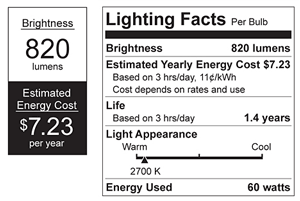
What Are Common Applications of LEDs?
LEDs effortlessly illuminate our lives with energy-efficient lighting, enhance visual experiences through display technology, guide our journeys with automotive lighting, support healthcare through medical equipment, enable seamless communication and signaling, and foster growth in horticulture. Let’s dive deeper into each of these applications to truly appreciate the versatile impact of LEDs:
Lighting and Illumination
LED technology has revolutionized the lighting industry by offering energy-efficient, versatile, and durable lighting solutions for various settings.
In residential spaces, LEDs are used for general lighting, task lighting, and accent lighting, providing comfortable and customizable illumination.
In commercial spaces, such as offices, retail stores, and hotels, LEDs help create a visually appealing environment while reducing energy consumption and maintenance costs.
Outdoor lighting applications, such as streetlights, park lights, and architectural lighting, benefit from the long lifespan, energy efficiency, and weather-resistant properties of LEDs.
Display Technology
LEDs have made a significant impact on display technology, finding applications in digital signage, television sets, computer monitors, laptops, mobile devices, and the entertainment industry.
In the realm of digital signage, LED displays are favored for their ability to produce high-contrast, high-resolution images with bright and vivid colors that remain visible even in bright sunlight. This makes them the perfect choice for outdoor advertising and information displays in public spaces.
Television sets have also benefited from LED technology, with LED TVs using LEDs as backlights to improve picture quality and contrast. This not only results in a superior viewing experience but also makes LED TVs more energy-efficient and eco-friendly than traditional LCD TVs.
LED-based displays have found their way into computer monitors, laptops, and mobile devices, offering thinner, lighter, and more power-efficient screens compared to their traditional counterparts. This is particularly important for portable devices, where battery life and portability are key considerations.
Lastly, the entertainment industry has embraced LEDs in large-scale displays, such as walls, floors, and ceilings at concerts, sporting events, and theme parks. These customizable displays captivate audiences with their ability to showcase a wide range of colors and patterns, creating dynamic and engaging visual experiences that leave a lasting impression.
Automotive Industry
The automotive industry has increasingly adopted LED technology for various lighting applications, enhancing both aesthetics and functionality.
Some of the key applications include:
Vehicle lighting: LEDs are employed in headlights, taillights, brake lights, turn signals, and interior lighting, providing enhanced visibility and energy efficiency.
Dashboard displays and instrument clusters: LED screens offer drivers clear, bright, and customizable information, such as speed, fuel level, and engine status.
Safety features: LEDs contribute to features like daytime running lights, adaptive headlights that adjust based on speed and steering angle, and backup cameras that provide clear images in low-light conditions.
Exterior styling: Accent lighting on the car’s body, illuminated logos, and badges utilize LEDs to create a distinct appearance.
Dynamic lighting effects: LEDs enable innovative effects such as sequential turn signals and animated light displays.
Ambient lighting: LEDs are also utilized in ambient lighting systems within vehicle interiors, allowing drivers and passengers to personalize the cabin atmosphere with adjustable colors and brightness levels.
Vehicle decoration:
They are also found in applications like a door handle illumination or illuminated door sills (welcome pedals) for improved visibility and convenience during nighttime entry and exit.
LEDs offer efficiency, durability, and design flexibility, allowing for more innovative and stylish vehicle designs. Additionally, LED lights provide better visibility and faster response times, enhancing road safety for drivers and pedestrians alike.
Medical Equipment LED technology has significantly advanced medical equipment, enhancing various applications such as surgical lighting, UV sterilization systems, and more.
Surgical Headlamps: LED-based surgical headlamps deliver bright, white light for illuminating the surgical area, boasting a longer lifespan, lower heat output, and superior color rendering compared to traditional halogen headlamps.
UV Sterilization: By emitting specific ultraviolet light wavelengths, LEDs contribute to the sterilization of medical instruments and environmental surfaces, mitigating the risk of infections.
Medical Imaging: In devices such as X-ray machines, CT scanners, and MRI machines, LEDs function as light sources, supplying accurate and bright illumination for enhanced imaging quality, particularly crucial in low-contrast situations.
Dental Applications: In dental equipment, LEDs are used in curing lights for hardening dental fillings quickly by producing a high-intensity beam of light that activates the resin.
Phototherapy Treatments: LEDs play a vital role in phototherapy devices designed to treat skin conditions like psoriasis, eczema, and acne, utilizing blue light to combat acne-causing bacteria and red light to alleviate inflammation and encourage wound healing.
Biometric Monitoring: In biometric systems, LEDs serve as light sources for illuminating biological samples and detecting specific biomarkers.
Endoscopic Procedures: In minimally invasive surgeries, endoscopes equipped with LED lights provide bright and clear visualization of the surgical site, enabling greater precision and accuracy during procedures.
In summary, LEDs have revolutionized the medical equipment industry by offering versatile, energy-efficient, and environmentally friendly solutions, ultimately improving patient care and safety in various healthcare settings.
Communication and Signaling LEDs have a wide range of applications in communication and signaling due to their high brightness, low energy consumption, long lifespan, and fast response times. Some of these applications include:
Traffic Lights: LED-based traffic lights are more energy-efficient and have a longer lifespan compared to incandescent lights, offering better visibility in bright sunlight and the ability to change colors more rapidly.
Emergency Vehicles: LED lights are used in police cars, fire trucks, and ambulances due to their brightness and long-distance visibility, providing fast and clear signaling in critical situations.
Aviation and Marine Signaling: Runway and navigation LED lights are preferred over incandescent bulbs for their durability, energy efficiency, and directed light emission, making them useful in directional signaling.
Fiber Optic Communication: LEDs are used as light sources in fiber optic communication systems that transmit data through light pulses, offering higher efficiency and bandwidth compared to traditional copper-based systems.
Visible Light Communication (Li-Fi): In wireless optical communication technologies such as Li-Fi, LEDs transmit data through visible light waves, providing higher data transfer speeds and enhanced security compared to Wi-Fi.
Advertising and Information Displays: LED screens are widely used in advertising and information displays, such as electronic billboards, digital road signs, and traffic information screens, offering high contrast, high-resolution, and vivid colors with excellent outdoor visibility.
Building Illumination and Indication Systems: LED indicators are used for safety exit signs, stairway lighting, and elevator indicators in buildings, providing clear and energy-efficient visual guidance.
Railway and Subway Signaling: LEDs are used in railway and subway signaling systems to indicate train operational status and traffic conditions, contributing to improved safety and efficiency.
Bicycle and Electric Scooter Signaling: LED lights are employed on bicycles and electric scooters as front and rear lights, turn signals, and brake lights, enhancing rider visibility and overall road safety.
These diverse applications demonstrate the versatility and benefits of LED technology in the communication and signaling sectors.
Horticulture and Agriculture
LED technology has made significant contributions to controlled environments, such as greenhouses and vertical farms. LEDs offer precise control over the light spectrum, which can be tailored to optimize plant growth and photosynthesis. This results in higher crop yields, improved plant quality, and reduced energy consumption. LED lighting also allows for year-round cultivation, enabling growers to meet the increasing demand for fresh produce in urban areas.
Other applications of LEDs in horticulture and agriculture include:
Dynamic Lighting Strategies: LEDs allow for the implementation of dynamic lighting strategies, such as photoperiod control and light intensity adjustments, to better simulate natural environments and promote plant growth.
Biological Pest Control: Specific wavelengths of LED light can be used to deter pests and pathogens from attacking crops, reducing the reliance on chemical pesticides and improving agricultural sustainability.
Photosynthetic Efficiency Research: LED light sources aid in researching photosynthetic efficiency, furthering our understanding of plant responses to light exposure and providing better guidance for future agricultural production.
Plant Growth Regulation: By adjusting LED spectra and lighting conditions, control over plant growth can be achieved, such as promoting flowering, controlling plant height, and lengthening or shortening growth periods.
Animal and Plant Welfare: The application of LED lighting in livestock and poultry farming provides a more comfortable, efficient, and energy-saving light environment, contributing to the improvement of animal and plant health and production efficiency.
These applications demonstrate the extensive use and potential of LED technology in horticulture and agriculture.
By providing efficient, durable, and versatile solutions, LED technology continues to transform various industries and improve our daily lives.
How to maintain the LEDs properly?
LEDs require minimal maintenance, but it’s essential to:
- Clean LEDs – Remove dust and dirt from the LED surface to ensure optimal light output and prevent overheating.
How to Clean LEDs Properly?
By following these detailed steps, you can ensure the proper maintenance and longevity of your LEDs.
- Handle LEDs – Be cautious when handling LEDs, as they can be sensitive to static electricity and physical stress.
When handling LEDs, it’s important to take certain precautions to prevent damage to the device. Here are some tips:
- Troubleshoot LEDs
What are the most common problems with LED lighting and how to address them?
Some common problems with LED lighting include:
Flickering:
This can be caused by a faulty driver or poor wiring connections. Check the wiring connections and replace the driver if necessary.
Dimming issues:
Dimming problems can arise from compatibility issues between the LED bulb and the dimmer switch. Use dimmer switches designed for LED lighting.
Color inconsistency:
LED bulbs can produce inconsistent colors due to differences in color temperature and color rendering index. Purchase bulbs with consistent color temperature and high CRI.
Overheating:
Overheating can occur due to poor ventilation or using the wrong driver. Ensure that the fixture has proper ventilation and use the appropriate driver.
Short lifespan:
LED bulbs have a longer lifespan than traditional bulbs. If an LED bulb has a shorter lifespan, it could be due to poor quality or incorrect installation. Choose high-quality bulbs and ensure proper installation.
Buzzing or Humming:
LED lights may produce a buzzing or humming noise, especially when dimmed. This can be caused by incompatible dimmer switches or improper wiring. To fix this, use a compatible dimmer switch and ensure proper wiring.
Fading:
LED lights may fade or lose brightness over time. This can be caused by a faulty driver, overheating, or high humidity. To address this, replace the faulty driver, ensure proper cooling and ventilation, and avoid installing LED lights in high-humidity areas.
Strobing:
LED lights may produce a strobing effect, which can be caused by a faulty driver or incorrect wiring. To fix this, replace the faulty driver and ensure proper wiring.
Compatibility with Smart Home Systems:
LED lights may not be compatible with some smart home systems, which can make their control challenging. To solve this problem, ensure the LED lights are compatible with the smart home system, or consider using a compatible bridge.
Electromagnetic interference (EMI) Problems:
LED lighting can emit electromagnetic radiation, which can interfere with electronic devices like radios and TVs. EMI can disrupt or even damage the functioning of electronic devices, resulting in degraded performance or complete failure. To address this issue, use LED lighting that has been tested and certified to meet electromagnetic compatibility (EMC) standards.
What are future Developments in LED Technology?
As LED technology continues to evolve, we can expect:
Improvements in Energy Efficiency – Ongoing research and development will likely lead to even more energy-efficient LEDs in the future.
a. Higher efficacy: Advancements in material science and device design, such as the development of new semiconductor materials like Indium Gallium Nitride (InGaN), are expected to lead to higher efficiency blue and green LEDs, which are crucial for white LEDs.
b. Better thermal management: As LEDs become more efficient, they generate more heat, which can reduce performance and lifespan. Improved heat sinks and materials with higher thermal conductivity are anticipated to enhance LED performance and reliability.
c. Smarter control systems: The incorporation of advanced control systems, such as sensors that detect occupancy and adjust lighting levels automatically, will help conserve energy and provide a better user experience.
d. Integration with other technologies: LEDs are increasingly being integrated with IoT sensors, creating smart lighting systems that adapt to changing environments and user needs, leading to more precise and efficient control.
Advancements in Manufacturing Techniques – As manufacturing processes improve, LEDs will become more cost-effective and widely available.
a. Chip Scale Package (CSP) LEDs: These LEDs eliminate the need for traditional packaging materials, reducing size and weight while increasing efficiency. Manufacturing CSP LEDs requires specialized equipment, which is becoming more widely available.
b. Micro-LEDs: Micro-LEDs are smaller and offer higher resolution, brighter colors, and better contrast than traditional LEDs. Although manufacturing micro-LEDs is challenging due to their small size, advancements in microfabrication, lithography, and wafer bonding are making mass production possible.
c. Quantum Dots (QDs): These semiconductor nanocrystals provide better color accuracy and brightness than traditional LEDs and can be tuned to emit specific colors. Manufacturing techniques like colloidal synthesis are crucial for QD integration into LED manufacturing.
d. 3D Printing: This technique allows for greater design flexibility and the creation of custom LED shapes and housing, reducing the need for traditional manufacturing methods and contributing to a more environmentally friendly production process.
The Potential for Fully Organic LEDs – The development of fully organic LEDs could lead to more sustainable and eco-friendly lighting solutions.
a.Advantages over traditional LEDs: FOLEDs are more flexible, lightweight, and energy-efficient than traditional LEDs and can be made using low-cost, environmentally friendly materials.
b.Applications in lighting and display industries: FOLEDs have the potential to replace traditional light sources and can be made into thin, flexible sheets, making them ideal for curved or irregularly shaped surfaces. In the display industry, FOLEDs are thinner, lighter, and less power-hungry, making them perfect for portable devices like smartphones and tablets, as well as high-end applications like televisions and computer monitors.
LiFi Technology: Light Fidelity (LiFi) is a wireless communication technology that uses visible light from LEDs to transmit data. As LED technology improves, LiFi could become more prevalent, offering a potential alternative to Wi-Fi with higher data transfer rates and lower latency.
Color Tunable LEDs: Future developments in LED technology may include color Tunable LEDs, allowing users to adjust the color temperature and hue of their lighting according to their preferences or needs. This can enhance user experience, mood, and even productivity in various settings.
Agricultural Applications: LED technology advancements can play a significant role in agricultural settings, such as indoor and vertical farming. LEDs with specific wavelengths can be tailored to optimize plant growth and productivity, potentially leading to higher crop yields and more sustainable farming practices.
Biocompatible and Biodegradable LEDs: Research into biocompatible and biodegradable materials for LED production could lead to more environmentally friendly disposal methods and potential applications in biomedicine, such as implantable devices or sensors.
These developments suggest that LED technology will continue to evolve, becoming more efficient, versatile, and environmentally friendly.
FAQs
Here, we’ll address some frequently asked questions about LED lighting.
1.
Conclusion
LEDs have revolutionized the lighting industry with their energy efficiency, long lifespan, and versatile design capabilities. As technology continues to advance, we can expect even more improvements and innovations in LED lighting, making it an increasingly attractive option for a wide range of applications. By understanding the basics of LEDs and their benefits, you can make informed decisions when choosing lighting solutions for your home or business.
